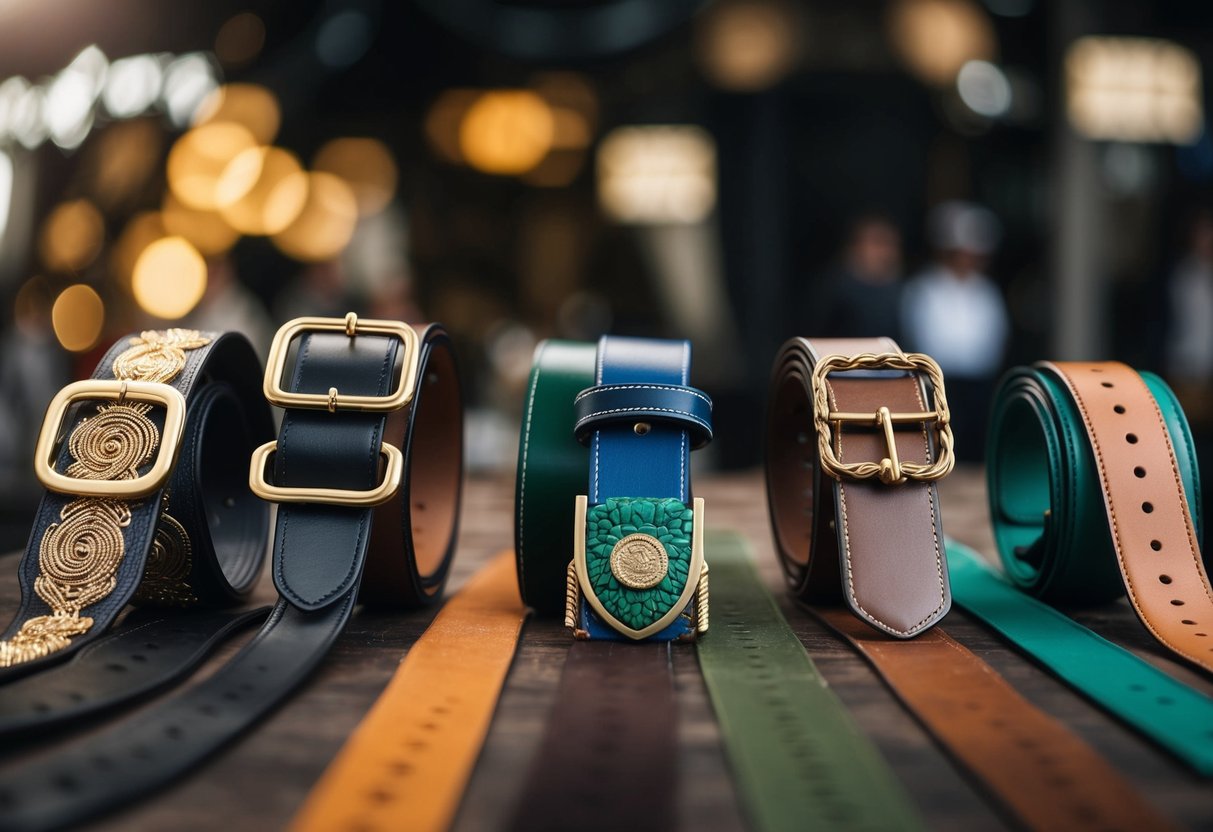Belt It Out: Unique Belts to Accentuate Your Style
Belt Materials and Craftsmanship

Understanding the composition and construction of belts can illuminate the characteristics that contribute to their durability and style. Different materials and craftsmanship techniques influence a belt’s strength, flexibility, and appearance.
Assessing Leather Quality in Belts
Leather belts are a timeless accessory prized for their durability and elegance. The quality of leather can greatly affect the longevity and appearance of a belt. Full-grain leather, while often more costly, retains the natural texture of animal hide, offering exceptional toughness and a unique patina as it ages. It is considered the pinnacle of leather choice for belts.
Top-grain leather is another popular choice, slightly lower in quality compared to full-grain. It is sanded to remove imperfections and is more affordable while still providing decent strength and a smooth surface. Corrected grain leather is treated for a uniform look but sacrifices some authenticity and durability. Consumers often weigh price against quality to find the best fit for their style and needs.
Synthetic and Alternative Belt Materials
Beyond traditional leather, synthetic materials provide a cruelty-free and often cost-efficient alternative. Materials such as polyurethane and PVC emulate the look of leather while offering resistance to moisture and easy maintenance. These options cater to environmentally conscious consumers and those looking for budget-friendly alternatives.
Innovative materials like cork and recycled fabrics have emerged, reflecting an increase in sustainable fashion. Cork offers a lightweight and flexible choice, appealing for its renewable sourcing. Recycled belts made from repurposed materials like seatbelts or bicycle tires offer unique textures while promoting eco-friendly practices. Each material varies in texture, flexibility, and environmental impact, shaping its appeal and usage.
The Role of Belts in Contemporary Fashion
Belts have evolved significantly in contemporary fashion, becoming essential accessories that combine both function and style. They are no longer just utilitarian objects but important elements that can transform an outfit’s aesthetic.
Incorporating a belt into an ensemble can create a polished look, drawing attention to the waist and creating a flattering silhouette. This simple accessory can elevate the sophistication of a casual outfit or add a touch of elegance to formal wear.
Today’s fashion embraces a diverse range of belt designs, from bold statement pieces to minimalist classics. Contemporary designs utilize various materials such as leather, metal, and fabric to complement different styles. These materials allow for a wide selection of textures and colors, making it easier to match a belt with any wardrobe.
Fashion designers often incorporate innovative embellishments like buckles, patterns, and embroidery on belts to reflect personal style and trends. These details contribute to the individuality and uniqueness of each piece, allowing wearers to express their creativity.
The resurgence of vintage and retro styles has also influenced belt designs, with many enthusiasts seeking out classic pieces that offer a nod to past eras. This blend of old and new styles enriches the fashion landscape, illustrating how belts can encapsulate both history and modernity.
In contemporary fashion, belts support the idea of beauty in diversity. They can complete an outfit, provide structure, add color, and reflect personal style, making them versatile staples in anyone’s wardrobe.



